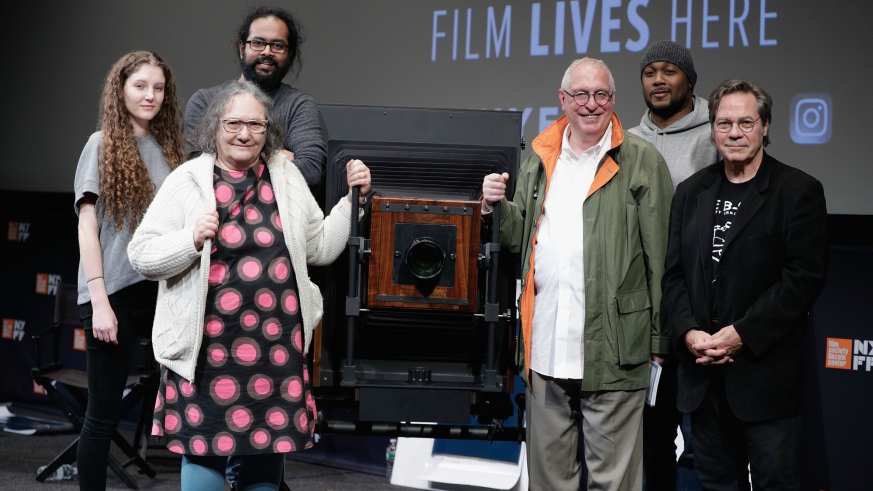After examining the lives and secrets of murderers and sociopaths in many of his past award-winning films, Errol Morris now turns his attention to a more personal subject in “The B-Side: Elsa Dorfman’s Portrait Photography.”
The Oscar winner’s latest documentary, which debuts in Boston on July 14, puts the spotlight on his longtime friend and Cambridge photography legend Elsa Dorfman. While Morris admits that his previous work has mostly dealt with subjects grappling with self deception, “The B-Side” is more of a celebration of the famed Polaroid portratist’s legacy.
“This is a study of someone I really like,” says the 69-year-old filmmaker. “I liked Elsa long before I decided to make a movie about her. Much to my amazement, I still like her, so that hasn’t changed really.”
In the film, Morris peels back the curtain on the photographer’s decades-long career, offering an intimate look at her Cambridge studio as well as peeks inside the artist’s extensive collection and archives. Besides her array of rare photos and tape recordings, Dorfman’s infectious personality is also put on full display.
Usually working out of her backyard workshop not too far from Harvard Square, Dorfman has photographed some of the biggest artistic names over the years. She earned praise for her 1974 book “Elsa’s Housebook – A Woman’s Photojournal,” which featured potraits of famous faces like Beat poet Allen Ginsberg, actor Peter Orlovsky and others. Dorfman has also photographed music icons like Bob Dylan and Aerosmith frontman Steven Tyler.
The acclaimed photographer, known for her large prints and use of the Polaroid 20 by 24 inch camera, admits that her notable subjects left a big impact on her as an artist.
“You know what influenced me the most – this sounds corny – but [Jack] Kerouac, Ginsberg,” Dorfman says. “I brought that back with me when I left New York and went back to Boston.”
Considering how today’s generation focuses on selfies and ephemeral social media posts, one can understand why Dorfman is a bit worried for the future of photography.
“I can’t understand it,” Dorfman says. “I can understand wanting to take digital pictures, but I can’t understand not wanting to take them off the telephone and putting them in a book or a narrative. It’s beyond me.”
While Morris agrees that the current technological approach to photos is radically different from how past artists used the medium, he believes the artform is constantly evolving as well. Drawing connections to how photos were taken in the past, Morris thinks that it’s difficult to predict where things will go in the future.
“We think in the 19th century, people just took a handful of photographs, but they took millions of photographs, a lot of which, have vanished,” he says. “What will get preserved and what will get lost in this sea of digital photography, it’s hard to say.”
If you go:
Opens July 14, Kendall Square Cinema, 355 Binney St., Cambridge, landmarktheatres.com



















